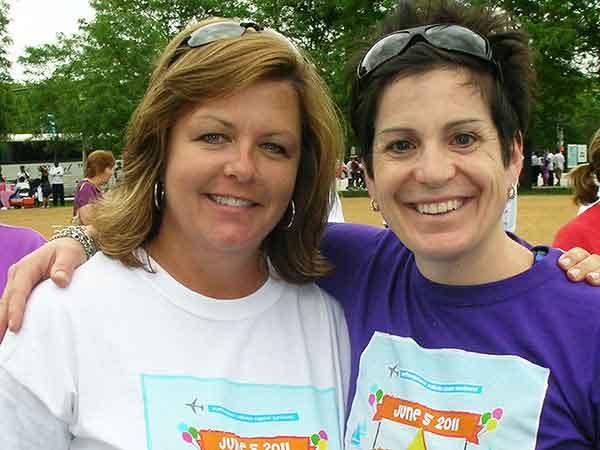Better Care for Children with Cancer Linked to Longer Lifespans
, by NCI Staff
Gradual refinements in the treatment of many childhood cancers over the last few decades have helped to extend the lifespans of many cancer survivors, a new study suggests. An analysis of data on more than 34,000 childhood cancer survivors showed that the death rate among survivors at 15 years after their diagnoses fell from 12.4 percent to 6 percent between the early 1970s and early 1990s.
Gregory Armstrong, M.D., of the St. Jude Children’s Research Hospital, presented the findings from the Childhood Cancer Survivor Study (CCSS) during a May 31 plenary session at the American Society of Clinical Oncology (ASCO) annual meeting in Chicago.
Although there have been tremendous advancements in the treatment of childhood cancers, some therapies can cause health problems that occur months or years after a disease is diagnosed or after treatment has ended. These so-called late effects may include a second primary cancer, heart or lung conditions, as well as other health issues such as cognitive declines and loss of fertility.
Compared with the general population, survivors of childhood cancer have a 15-fold increased risk of dying from a second cancer and a seven-fold increased risk of cardiac-related death, Dr. Armstrong noted.
The new study found that, between the early 1970s and early 1990s, the cumulative incidence of death from “other health-related causes”—a category that primarily consists of mortality due to late effects of cancer therapy—decreased from 3.1 percent to 1.9 percent. And survivors diagnosed in the 1990s had a lower risk of dying from causes such as second cancers, heart disease, and lung disease than those diagnosed in the 1970s.
The reduction in mortality was most striking among survivors of Wilms tumor, Hodgkin lymphoma, and acute lymphoblastic leukemia (ALL).
The treatment changes that occurred during the study period included reductions in the doses of chemotherapy and radiation therapy that young patients received. These refinements were tested in clinical trials run through the NCI-funded Children's Oncology Group, and the results showed that, in many cases, the intensity of a treatment could be reduced without compromising the therapy’s effectiveness.
For example, in the 1970s, 85 percent of patients with ALL received cranial radiation, compared with only 19 percent in the 1990s. The dose of radiation used to treat patients with Hodgkin lymphoma and Wilms tumor has also been reduced substantially. The cumulative exposure to anthracyclines, a class of chemotherapy drugs that can have serious cardiac side effects, has also been reduced across these three diseases.
The results demonstrate the important role of risk-adapted therapy, said Malcolm A. Smith, M.D., Ph.D., of NCI’s Division of Cancer Treatment and Diagnosis. "Previously it had been shown that this strategy produced increased survival rates resulting from improved disease control, and now we know that mortality from late effects is also reduced by risk-adapted therapy," Dr. Smith said.
Improvements in the screening, detection, and treatment of late effects, as well as in supportive care, have also played an important role in extending the lifespan of these individuals, Dr. Armstrong noted.
Survivors of childhood cancer “have a lifetime to develop late effects,” said Michael Link, M.D., of the Lucile Packard Children's Hospital Stanford, in discussing these results during the ASCO plenary session. The reduction in mortality from treatment-related health effects confirms that when treating some children with cancer, “sometimes less is more,” he said.
Even as treatment for childhood cancers begins to move toward the use of targeted therapies, Dr. Link continued, concerns about side effects and late effects will remain. He called for continued research to help clinicians learn about the factors, such as genetic variants, that can predict which patients are at the greatest risk of treatment toxicities and late effects.
